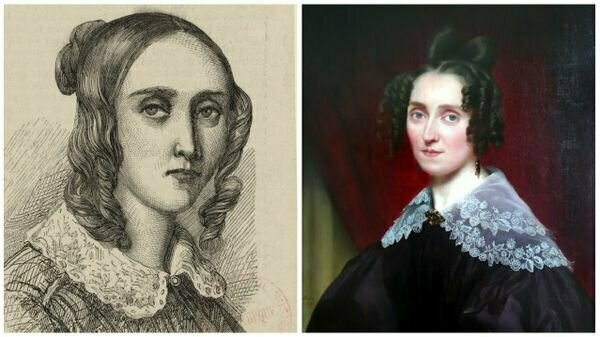
About the Piece
Instrumentation: Chamber Orchestra: 2222-2000, timp, strings
Duration: 35 min
Program Note
Louise Dumont Farrenc was the wife of Arstide Farrenc, a woodwind performer and music publisher who knew good music when he heard it. Louise had become a pianist of professional quality in her adolescence, and by the time she was in her early twenties had published a series of études that became required study for all piano students at the Paris Conservatory.
The Dumont family had a long history of excellence in both music and painting. Louise Farrenc carried on that tradition, and published a number of important orchestral works in addition to her piano compositions. Her work was praised by Robert Schumann, among others.
She was the only woman of the 19th Century to hold the prestigious post of Professor of Piano at the Conservatory, a post she held for more than thirty years until her retirement. Her success at large scale orchestral works such as her three symphonies and overtures was amazing considering the prejudice she had to overcome. Not just prejudice against women composers, but against symphonic music at a time when the musical life of Paris was geared primarily to opera and other theatrical music. Even Berlioz had difficulty overcoming those odds.
There were quite a few notable female composers at that time, but most of them wrote shorter pieces meant for soirees, or private concerts, and most of those composers were, in a sense, part-time composers. The fact that some of them, such as Clara Schumann and Fanny Mendelssohn, are better known than Louise Farrenc might be the result of their having far more famous relatives.
Farrenc’s Symphony No. 3 is in the traditional four movements, the first of which is in sonata form, as expected. Audiences will very likely notice a similarity to Beethoven, which is not surprising since German music was the dominant genre in Europe at that time. Paris was one of the few musical centers resistant to the German influence, and therefore uninterested in symphonies. If you wanted to get ahead in the musical life of Paris, you had to write operas. Farrenc was very successful in her time, but her works disappeared from the repertoire until recently.
Although the piano was Louise’s instrument of choice, she was remarkably prolific in the area of chamber music. Besides her three symphonies and two overtures for full orchestra, she wrote two quintets, a sextet, a nonet, and, of course, many piano works.
Program Note taken from the Manchester Symphony Orchestra
Header text
Conductor’s Perspective
This symphony has a few tricky rhythmic spots (mostly with hemiola with different instrument grouping), is not too difficult when the tempo is taken a bit slower than intended. Need good first violins as it takes the main role in almost the entire symphony (except for the trio in the third movement and a few woodwind solo sections — like what Mozart would have in a piano concerto, for example). The harmony and structure of this piece are quite classical and traditional so the style is not too hard for less-experienced students. One might note that the timpani does play a lot throughout the symphony, unlike the traditional “punctuation” like usage.
About the Composer
Born: May 31, 1804, Paris, France
Died: September 15, 1875, Paris, France
Born Jeanne-Louise Dumont, Louise Farrenc showed considerable skills as a pianist from a young age. She subsequently had several prestigious teachers, including two of the best pianists of that time, Johann Nepomuk Hummel and Ignaz Moscheles. She also showed promise as a composer, and possibly studied with Anton Reicha at the Paris Conservatory starting when she was fifteen. In 1821 she married a flutist she met at the Conservatory, Aristide Farrenc, and took his last name. Farrenc toured as a pianist for years, her reputation as a virtuoso becoming such that, in 1842, she was appointed Professor of Piano at the Paris Conservatory – the only such appointment at that institution given to a woman in the nineteenth century. She held the position for thirty years. As a composer, she initially focused on music for the piano, then moved to writing chamber and orchestra music in the late 1830s and 1840s. After her death, she was remembered for her piano playing but largely forgotten as a composer, until a revival of interest in her music in the last couple of decades.
by Chris Morrison, taken from Reno Chamber Orchestra
Performance Materials
Instrumentation: Chamber Orchestra: 2222-2000, timp, strings
Duration: 34 min
Rental parts and can be requested through Zinfonia.
Note from Chaowen [updated May 2025]:
When I performed it years ago Zinfonia request led me to Scores Reformed in the UK, which was selling newly-engraved parts and score. The 2021 price was £450 for the entire set (1 score + one orchestra set with strings 76543). Steven Reading can be contacted at admin@scoresreformed.co.uk However, there are still a few mistakes in the score in this edition, it appears now in 2025 that Scores Reformed has stopped offering this work.
Conductor Diane Wittry has made her own edition and it’s available through Peckham Publications. I’ve not used this edition myself, though.
Perusal Scores
Perusal Score through Peckham Publications:
Recording
Recording on Youtube with Italian conductor Graziella Contratto leading the Bern Chamber Orchestra